Mozambique: Mondlane summoned by the Public Prosecutor's Office with a detention warning
Special report: Reading the numbers of the CNE election results of 26 October 2023 – CIP Mozambique Elections
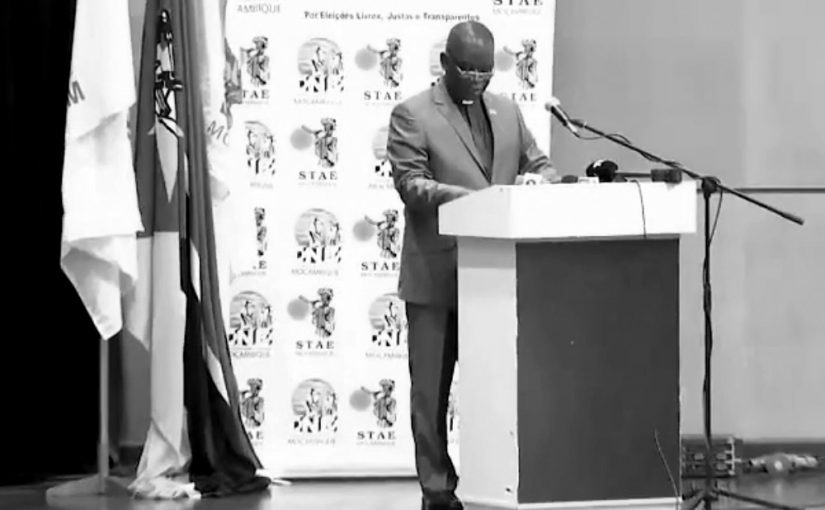
in file CoM
-
CNE changed Vilankulo, Quelimane and Matola Rio results in secret
In the election results announced Thursday (26 October), the National Elections Commission (CNE) simply copied the district election commissions’ results for 62 municipalities. But in secret the CNE changed three – Vilankulo, Quelimane, and Matola Rio. In Vilankulo the number of Frelimo votes was increased so it was no longer seen as a close race. In Matola Rio the CNE changed the results to give Frelimo a bigger margin in the municipal assembly. But bizarrely, in Quelimane in secret, the CNE gave extra votes to Renamo, which means Frelimo no longer has a majority in the Quelimane assembly.
Only Beira survived under MDM control and the CNE allowed no victories by Renamo. Indeed, and most unusual, Frelimo has a majority in 63 of the 65 municipal assemblies. Parallel counts show that Renamo actually won in four big cities – Maputo, Matola, Quelimane and Nampula. Therefore, we do not accept the validity of the the Frelimo tsunami announced by the CNE. But in this special report, we take a closer look at the CNE’s own numbers.
This first part looks at the secret changes to district results. The second part shows how the CNE’s own results show ballot box stuffing and taking votes away from Renamo in at least one-quarter of municipalities. The third part looks at the four big cities.
The CNE has always claimed the right to change results in secret, and to not report those changes or even keep a record of this. These changes are actually done in secret by STAE (Technical Secretariate for Electoral Administration) and normally even the CNE is not told of the changes. Indeed the results released Friday by the CNE have three files for each municipality – 195 files. We have posted them on https://bit.ly/Moz-El-Aut-CNE but they clearly were not even checked by STAE; two files are missing and one file is clearly a test left over from a system trial.
Changing results in secret is not new. Former US President Jimmy Carter and many others say Afonso Dhlakama was elected in 1999 and the results changed. The CNE never released detailed results but the changes were clearly quick and sloppy; Joaquim Chissano won by 200,000 votes but in Nampula the CNE claimed 80,000 more people voted for President than for parliament. And the CNE admitted it threw out 300,000 presidential votes – in secret and with no record kept.
And just four years ago both the CNE and the Constitutional Council changed the “final” results twice in secret, and never admitted the changes. All three versions are posted on https://bit.ly/Moz-2019-Elec-Bull.
Since 1994 this bulletin has tried to keep track of secret changes by comparing different versions of publish results. This year we compared the published district editais with the just published CNE editais and found these three changes.
Vilankulo, Inhambane was announced by the district and provincial elections commissions as an extremely tight race, with Frelimo winning by only 34 votes. But when the CNE announced the results, the difference was 1282 votes. The CNE found more than 1000 extra voters, who raised the turnout from 57% to 60%, and all voted for Frelimo. And 191 Renamo votes were redistributed to Frelimo and MDM. The changes make no difference in practice – Frelimo has 12 assembly seats and Renamo 11. But the bigger margin looks better.
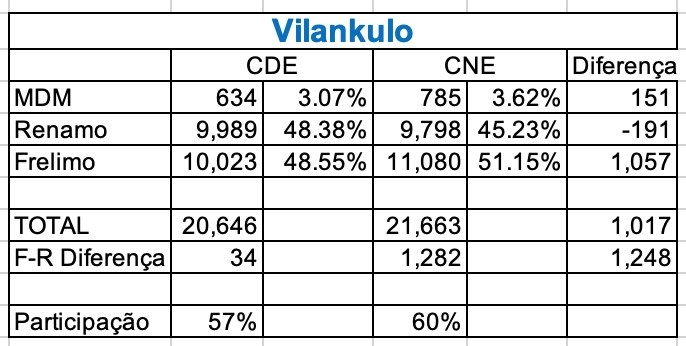
Quelimane has the strangest change, taking away the Frelimo majority in the municipal assembly. The CNE found an extra 1,533 votes, the equivalent of three polling stations, and taking the turnout up from 63% to 64%. But the CNE gave Frelimo exactly the same number of votes as the city election commission but added 221 to MDM and 1312 to Renamo. Assembly seats are distributed according to the d’Hondt method. The CDE results give Frelimo a clear majority, with 24 seats, 22 for Renamo and 1 for MDM. The extra votes move a seat from Frelimo to Renamo. So Frelimo has 23 seats and the opposition has 23 – 22 Renamo and 1 MDM. Again, the change is secret – unreported and unexplained. The new distribution of votes means the mayor will still be Frelimo, but with a split assembly making it very hard to govern.

In Matola Rio, Maputo province, the District election commission (CDE) said there were 29,604 votes in the ballot box, but that there were 30,908 votes – 29,262 votes for candidates and 1,226 blank and invalid. The CNE solved this problem by increasing the numbers of ballot papers in the box by 1314. As is the custom, the change was secret, so there is no way of knowing if the electoral commission asked the CDE to count the ballot papers again, but it seems unlikely. The reason for the choice is probably that if those votes had been seen as ballot box stuffing and subtracted from Frelimo it would have lost a seat. With these votes, the assembly seats are 18 Frelimo, 12 Renamo, 3 MDM. But without those seats, it is 17,13,3 giving Frelimo only a one seat margin. These changes were done in secret by STAE and even the CNE is not told of the changes. But without a recount, STAE decided in secret to give Frelimo an extra assembly seat and a more comfortable margin.
-
CNE data shows 1/4 of municipalities had ballot box stuffing or stealing Renamo vote
Fraud is shown in the results announced Thursday (26 October) by the National Elections Commission. In the second part of this investigation, we look at significant ballot box stuffing and stealing votes from Renamo, which we find in 18 municipalities – on quarter of all municipalities.
We do not accept the validity of the Frelimo tsunami announced by the CNE, but in this special report, we take a closer look at the CNE’s own numbers, which we have posted on https://bit.ly/MozEl-Aut-CNE. In this part we look at ballot box stuffing and taking votes away from Renamo.
Using the CNE’s own published numbers, find that this serious ballot box stuffing occurred in at least six municipalities. There is a visual way to look at this. The chart below has all 65 municipalities and the two dimensions are the turnout and the % of the valid vote for Frelimo:
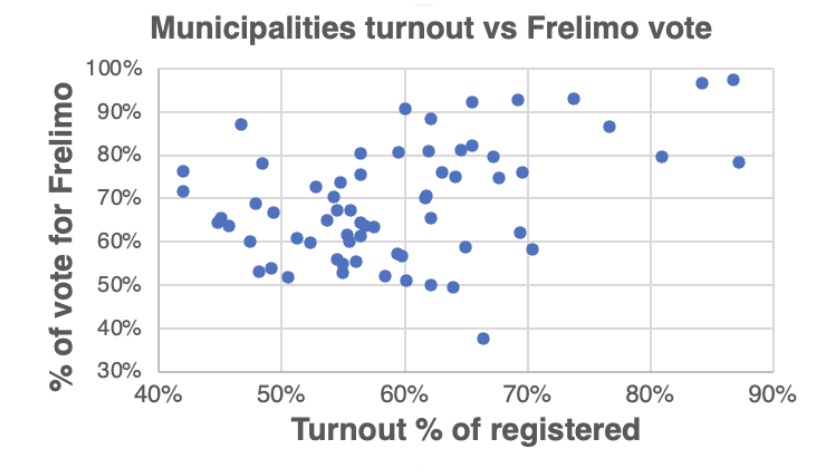
We can see that nearly all municipalities are in a square with turnout between 40% and 70% and votes for Frelimo between 40% and 90%. But six municipalities in the upper right of the chart stand out. The have turnout over 70% and a high Frelimo vote. The two in the upper right corner have a record – Massingir (87% turnout, 97% Frelimo) and Dondo (87% turnout, 78% Frelimo). Massingir in Gaza has always taken pride in having nearly all registered voters cast their ballot for Frelimo, but this has always been recognised as ballot box stuffing. Dondo is notorious for ballot box stuffing in 1998, when there was no opposition because of the Renamo boycott, but when few people turned out, the ballot boxes were stuffed. This has become a habit.
We did a parallel count this year in Marromeu (81% turnout, 80% Frelimo),and we recorded the number of votes on the blackboard, where the score is kept during the count and thus gives the most accurate record. We found that the official editais inflated the vote by more than 3000 compared to the blackboard.
The other three in the upper right corner of the chart are Chitima (84%, 97%), Caia (77%, 87%) and Nyamayubue (77%, 87%).
In all, we estimate that in these six municipalities the Frelimo vote was inflated by more than 17,000. But the point is much larger – we can see that 9% of all municipalities outrageously inflated the Frelimo vote.
The other important fraud that can be seen from CNE figures is making Renamo ballot papers invalid (nulo) by adding an extra mark to the ballot paper, or simply moving votes from Renamo to nulo on the edital. The check for this is to look for municipalities with high percentages of nulos. The most extreme are Isaca with 7.3% and Angoche with 7%. If we look more closely at the CNE results we see nearly all polling stations have between 1.5% and 4.5% invalid votes. But 12 municipalities have nulos of 4.8% or higher, which indicates some false invalidation of votes. In all we find 4,580 votes above 4.5%.
Fraud takes place in individual polling stations. When we looked at individual polling stations in the parallel count for Maputo and Matola, we found 12,500 votes taken from Renamo. (Bulletin 160, 21 Oct) The estimates we are doing here look at entire municipalities so only identify fraud that this so gross and occurs in enough polling stations to obviously affect the municipal results as reported by the CNE. We find 6 municipalities with ballot box stuffing favouring Frelimo and 12 municipalities with ballot papers, probably of Renamo, being declared invalid. But what is shocking is that this level of fraud is shown by the CNE’s own data in 18 municipalities – one-quarter of municipalities.
-
CNE pushed out Renamo in 5 cities by stealing 180,000 votes and adding ghost voters
In five cites Renamo’s victory was openly stolen. In the third part of our investigation of the numbers of the National Elections Commission’s (CNE) official results published on 27 October we compare the CNE numbers to the parallel counts done by civil society and political parties, to see where the trickery lies.
Maputo is the most obvious and blatant theft:

The first entry is the PVT, the “Parallel Vote Tabulation”. It is a count done using the results sheets (editais), which are signed and stamped by the polling station staff. They are required by law to be posted on the polling station door and with copies given to party representatives and observers, as soon as the count is finished. These documents have legal standing. The 97% says that 97% of all polling stations (mesas) are included. (The registered voters and votes in the top row are the ones in those 97% of polling stations, and thus slightly less than the total in all polling stations.)
The second entry is the official result as announced by the National Elections Commission (CNE) on 26 October. Again by law, the district/city elections commission (CDEs) sums the editais of the polling stations, which are sent to the CNE which announces the 65 results. Thus, the PVT and CNE numbers should be the same, but they are manifestly not. We trust the PVTs and argue that the elections commissions have manipulated the results.
The two red numbers indicate that the elections commissions have simply moved the lower Frelimo vote total of about 130,00 votes over to the Renamo column, effectively taking away more than 60,000 votes from Renamo. In addition note that the turnout has increased from 63% to 65%. This extra 2% is about 13,000 “ghost” voters who no one saw on polling day but all voted for Frelimo. Thus we are dealing with more than 73,000 fraudulent votes – rather large pile.

Matola, Mozambique’s largest city, is another serious example. The PVT, based on the ediais handed out at the end of the count, shows that Renamo clearly won. Indeed, the missing editais are widely scattered across the city, and the PVT percentages should apply. Therefore we would expect Renamo to have kept its 59% and won with about 215,000 votes.
Thus 85,000 of Renamo’s votes were simply handed over to Frelimo. The tabulations done by the city, district and national election commissions are secret and no records are kept. So we do not know how more than 85,000 votes changed from Renamo to Frelimo.
In Nampula city we have a 99% PVT – only three polling stations are missing. And moving votes is clear:

The chart shows 10,000 votes were taken from Renamo, nearly 1000 from MDM, and 1000 from small parties, and in secret given to Frelimo.
Chiúre is a small city in southern Cabo Delgado and was the only one in the province governed by Renamo until now. The PVT shows clearly that Renamo was re-elected:
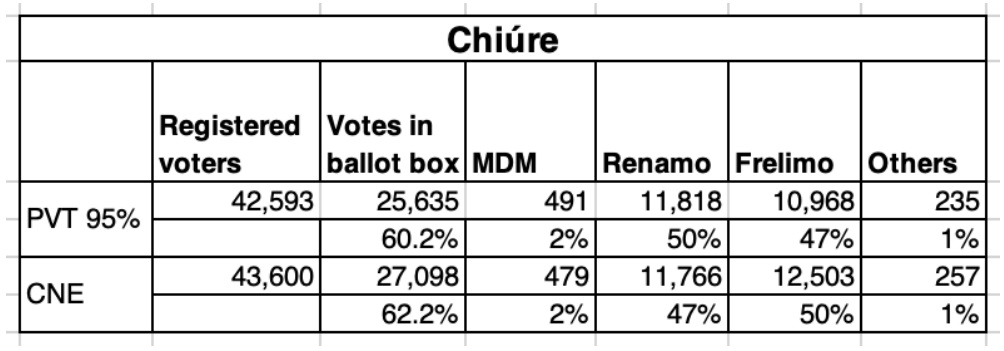
Here the race was close, with Renamo leading by fewer than 1000 votes. Miraculously, turnout jumped by 2% after the polls closed, and 1500 ghost voters all voted for Frelimo, which was enough to give it victory. Because the tabulation is done in secret with no records kept, there is no way of knowing how the National Elections Commission found 1500 votes that polling stations heads had never seen. In all four of these cases the changes were done a local level, and the National Elections Commission simply rubber-stamped the results of the city/district elections commissions.
As we noted in the first part of this study, Quelimane was different. Both the city (CDE) and national (CNE) elections commissions made changes.

The district election commission found 10,000 extra votes and gave them to Frelimo. Then the national elections commission found another 1500 ghost voters and decided they had voted for Renamo and MDM.
It will be for the Constitutional Council to decide whether or not the elections commissions can simply allocate 180,000 ballots to the party of its choice.
READ; Mozambique Elections: Deadline to appeal to the Constitutional Council ends today – Notícias


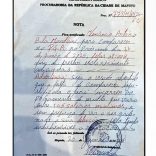









Leave a Reply
Be the First to Comment!
You must be logged in to post a comment.
You must be logged in to post a comment.